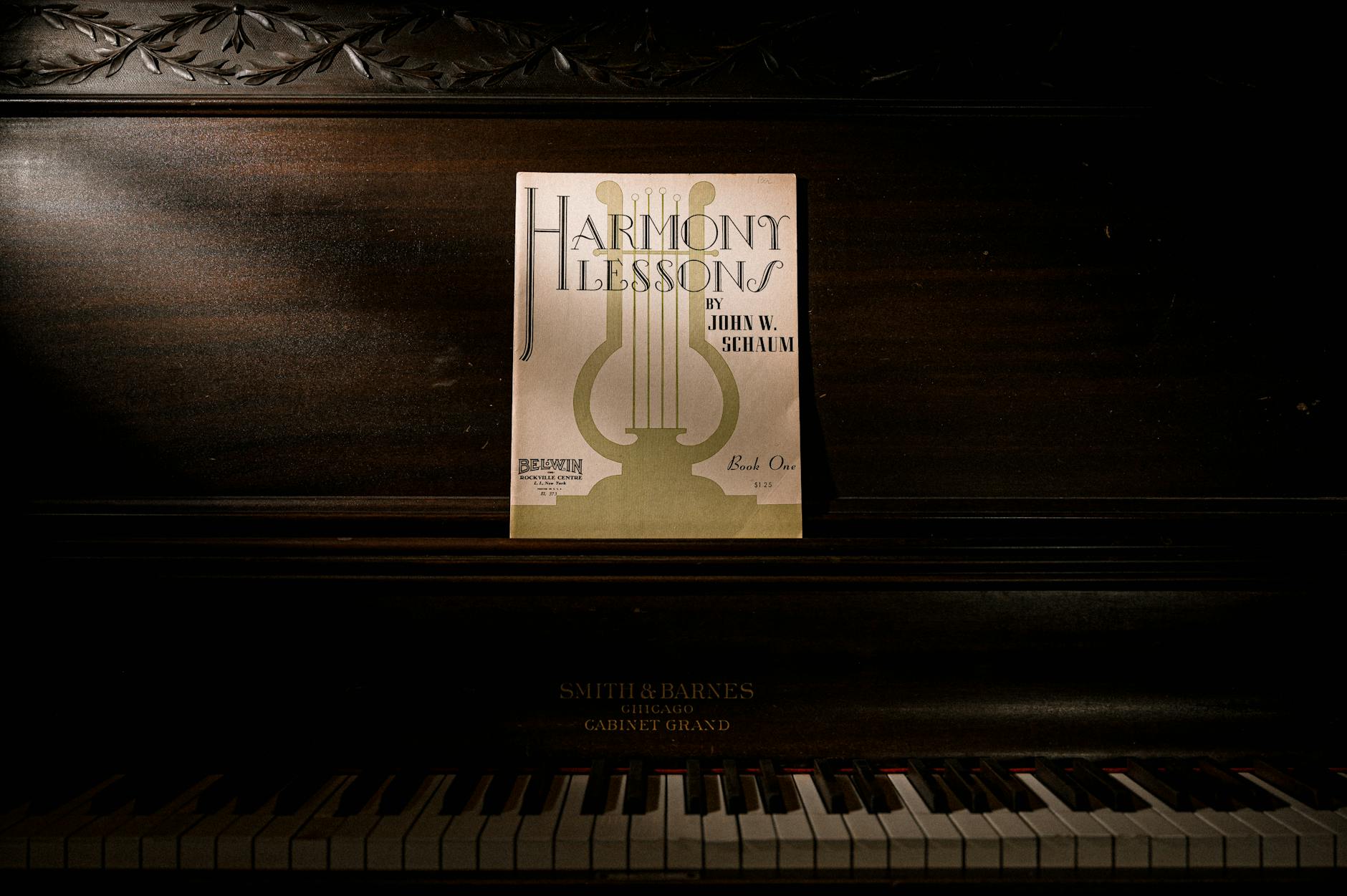3 Ways to Apply Jazz Harmony Without Getting Lost in Theory
Discover 3 ways to apply jazz harmony guitar fast, using real songs and simple chords. Start mastering jazz guitar today—no deep theory required!

Jazz harmony can feel like a maze. Chord symbols pile up. The theory never seems to end. Many guitarists end up stuck, worried they need a library's worth of knowledge to even start. The real opportunity? Applying jazz harmony on guitar without drowning in theory books. It's simpler than most expect. By using shell voicings, mastering a few progressions, and learning directly from jazz standards, players can create authentic, colorful sounds—fast. This guide breaks down three practical ways any guitarist can start using jazz harmony right now, focusing on what's playable, not what’s academic. No deep theory needed—just real music-making.
What You'll Learn:
- Start with shell voicings and triads for instant jazz colors—even if you can't name every chord tone.
- Master ii–V–I and turnarounds by using simple shapes and voice-leading, instead of memorizing endless theory.
- Learn jazz harmony by playing standards, harmonizing melodies, and working on real songs—not just scale patterns.
- Get actionable fretboard shapes, voicings, and mini-tutorials for immediate application.
- Avoid common mistakes that trip up self-taught players, like over-complicating or skipping fundamentals.
- Find out how and when to add more theory as your playing grows—if you want to.
1. Start Simple: Jazz Harmony with Shell Voicings and Triads
Jumping into jazz harmony doesn't have to mean endless theory. Many pro players actually recommend starting with shell voicings and triads—tools that sound great without years of analysis. It's about getting those legendary jazz colors straight under your fingers.
What Are Shell Voicings and Why Do They Work?
Shell voicings strip chords down to the essentials: root, third, and seventh. That's it. No complex extensions needed—just the notes that give a chord its identity. According to jazz educator Tom Lippincott, mastering these shapes builds neck fluency and covers most jazz scenarios. Shell voicings keep things clear and punchy—great when other musicians or singers need space.
- Root on the 6th or 5th string, then add the 3rd and 7th on adjacent strings
- Leaves room for the bass and melody
- Easy to shift up and down the fretboard without changing fingerings
- Works with both comping and single-note runs
Trying to play rootless voicings too soon? That's where players often get lost. Skipping shell voicings usually means getting stuck later on.
Building and Moving Triads for Instant Jazz Color
Triads—major, minor, diminished, augmented—are everywhere in jazz. The trick is seeing them as the top of richer chords (think Cmaj7 is just a C triad plus a B). Start by playing major and minor triads up the neck as three-note grips. Once those are comfortable, alter a note to change the sound:
- Raise the fifth for an augmented color
- Lower the third for minor or minor 7 chords
- Add a sixth or seventh for richer harmony
- Move shapes in half steps to create tension
Premier Guitar's boot camp recommends this approach as a way to imply jazz extensions quickly. Simple, movable, no theory headache.
Applying Shells and Triads in Real Progressions
It's one thing to practice in isolation. The real test? Applying these shapes to real jazz progressions. Try this with "Autumn Leaves": Play shell voicings for each chord, keeping one or two fingers anchored when possible. Then, substitute triads for trickier chords. This method works for other standards, too:
- Identify the root, 3rd, and 7th for each chord.
- Find a shell voicing close to your last grip—avoid jumping around.
- Use triad shapes for dominant chords needing a punch.
- Keep everything tight—aim for tension and release.
Mastering shell voicings and triads gives guitarists instant access to the core of jazz harmony—no deep dives required. Up next: making progressions flow.
2. Master Key Progressions: ii–V–I and Beyond Without Heavy Theory
The backbone of jazz? Key progressions like ii–V–I. Most tunes rely on these. Knowing how to play them—with practical shapes instead of dense theory—sets players up for almost any standard.
Breaking Down the ii–V–I Progression for Guitarists
Every jazz guitarist needs the ii–V–I in their pocket. It's simple: the ii is a minor 7, the V is a dominant 7, and the I is a major 7. Start with shell voicings for each. Jamie Holroyd's 80/20 rule suggests focusing all practice here, because ii–V–I covers the majority of jazz material:
- For G major: Am7 (ii), D7 (V), Gmaj7 (I)
- Use the same shell grip for ii and V, just adjust the root
- Walk shell voicings up and down the fretboard for any key
Simple finger shifts take care of most progressions—all without getting stuck on note names.
Voice-Leading and Inversions: Making Progressions Flow
Voice-leading is the secret sauce. Instead of jumping from one chord to the next, let one or two notes stay the same between shapes. Play an Am7 shell voicing, then move one finger to change to D7, then another to hit Gmaj7. Inversions come in handy—base your voicing on the 3rd or 7th, not always the root. This makes for:
- Smoother transitions
- Less movement between chords
- More professional, "connected" sound
Tim’s Guitar Workshop breaks down this process step-by-step, showing just how easy ii–V–I becomes once voice-leading basics are in play.
Expanding Your Progressions: Turnarounds and Substitutions
Once ii–V–I feels solid, expand with turnarounds (I–VI–ii–V), tritone substitutions (swap V7 for a bII7), and secondary dominants. Practice in one key first, then cycle through others. Here's a quick tutorial:
- Play I–VI–ii–V in G: Gmaj7–E7–Am7–D7
- Replace D7 with Ab7 to hear the tritone sub
- Add secondary dominants by making every chord a dominant 7, then resolve back home
Wikipedia's jazz harmony resource confirms these are the building blocks behind nearly every standard. Next, see how learning jazz harmony through songs locks these skills in.
3. Learn Jazz Harmony Through Standards and Melodic Voice-Leading
Jazz harmony makes the most sense inside real songs. Turns out, learning standards and harmonizing melodies not only teaches harmony, but also trains ears and fingers together.
Choosing Standards: Where to Start and What to Look For
Some songs just work better for learning harmony. "Autumn Leaves" and "Blue Bossa" surface again and again for beginners. They feature ii–V–I progressions, clear melodies, and changes that are instantly recognizable. Start with a standard that features simple chords, predictable forms, and lots of room for shell voicings and triads. Here are a few more options:
- "All of Me" – great for learning turnarounds
- "Satin Doll" – plenty of ii–V–I motion
- "So What" – simple modal groove with easy harmonization
Choosing wisely means more time playing, less time puzzling over theory.
Harmonizing Melodies: The Melodic Approach
Zvonimir Tot’s method focuses on integrating melody notes and chords, voicing heads in stepwise fashion. Start with the melody on the highest string and build the shell voicing underneath. This approach makes every chord a functional harmony—not just a static grip. Tips for melodic harmonization:
- Keep voicings tight to the melody, not open and wide
- Use simple shapes, drift to color notes (9th, 11th) if it sounds good
- Avoid complex extensions at first—get the song sounding strong and musical
Groth Music’s resources emphasize that connecting melody and harmony this way keeps things musical, never just theoretical.
Practice Routines: Play-Alongs, Tabs, and Visualization
The best way to nail jazz harmony? Practice whole tunes—using play-along tracks, downloadable tabs, and visualizing fingerings. Follow this process for faster results:
- Pick one standard and print a tab sheet with shell voicings marked
- Play along with a track, matching melody and chords
- Visualize fingerings away from the guitar, then test yourself again
- Switch up keys every two choruses for transposing practice
Reddit users agree—learning standards is far less overwhelming and actually more fun than slogging through exercises alone. On to the pro tips that make these moves stick long-term.
4. Pro Tips, Common Mistakes, and Next Steps for Applying Jazz Harmony
Getting jazz harmony under the fingers doesn’t need to feel overwhelming. There are time-tested shortcuts, as well as a few tripwires to avoid. Here’s how to keep progress steady and frustration low.
Pro Tips: Making Jazz Harmony Second Nature
Small, repeatable habits build mastery. Try these:
- Practice triad "diagonals"—same shape, sliding between string sets
- Run shell voicings across all 12 keys, focusing on minimal movement
- Add a fourth note (e.g., upper extension) one string at a time after basics feel solid
- Record yourself comping over standards for honest feedback
Building on triads to form 7th chords, as explained by Jazz Guitar Today, makes the fretboard pattern predictable and manageable.
Common Pitfalls: What Trips Up Most Guitarists
Some mistakes show up everywhere:
- Over-complicating with too many extensions before basics are locked in
- Skipping standards and only drilling theoretical exercises
- Ignoring voice-leading—jumps between chords break musical flow
- Learning dozens of voicings but not connecting them to real tunes
The solution? Stick with the basics, apply them inside actual songs, then layer on complexity only as needed. Premier Guitar suggests systematic triad alterations before venturing into more advanced grips.
Next Steps: Building Your Jazz Harmony Toolkit
After comfort with shell voicings and progressions, start layering in more color:
- Add a fourth voice for 7th, 9th, or 13th chords—even one note changes the vibe
- Experiment with quartal voicings (built on fourths) for a modern sound
- Bookmark trusted resources—Jazz Guitar Today and Jamie Holroyd offer stepwise guides to expand further
Progress isn’t about racing to the deepest theory, but building a repeatable, flexible toolkit. That’s how jazz harmony sticks. One final recap closes the loop on mastering harmony through context.
Frequently Asked Questions
How do I start using jazz chords on guitar without knowing all the theory?
Can I play jazz harmony with basic chords and progressions?
What are shell voicings and how do I apply them in songs?
What's a common mistake when learning jazz harmony on guitar?
When should I add more theory or advanced voicings?
The heart of jazz harmony isn't found in dense books—it's in simple, real-world moves any guitarist can use instantly. Shell voicings and triads provide the first step, letting anyone apply jazz harmony to real songs without closets of scales and diagrams. Key progressions like ii–V–I unlock the sound of countless standards. And learning through actual tunes, not just theory drills, makes everything stick. The invitation? Pick one approach right now and try it on a favorite standard. See just how much jazz color shows up with surprisingly little theory. Next thing you know, jazz harmony feels like home—not a maze. Play, experiment, and let the music grow with you.
Key Takeaways
- Jazz harmony can be applied musically without heavy theory using shell voicings, triads, and a few core progressions.
- Learning through standards and integrating melody with harmony keeps things practical and memorable.
- Mistake-proof routines and stepwise layering build confidence, not confusion.
- Solid foundations open the door to advanced concepts as skills develop.
Related Topics
Explore more articles in these topics to deepen your knowledge.
Related Articles

Autumn Leaves Jazz Guitar Tutorial for Beginners (2025): Step-by-Step Chord-Melody Guide with Tabs & Video
Master Autumn Leaves jazz guitar tutorial step-by-step—easy tabs, video, and tips for beginners. Start playing this classic jazz standard today!

Mastering the Backdoor Progression (iv–♭VII7–I) in Jazz Guitar Improvisation
Discover backdoor progression jazz guitar tricks. Master improvisation and add soulful color to your playing. Start exploring new sounds today!

Deep Dive into Coltrane Changes on Giant Steps for Jazz Guitarists
Discover how to play Coltrane changes Giant Steps guitar with clear theory, fretboard tips, and real exercises. Master this jazz classic today!
Discover more insights from our blog to enhance your musical journey.
